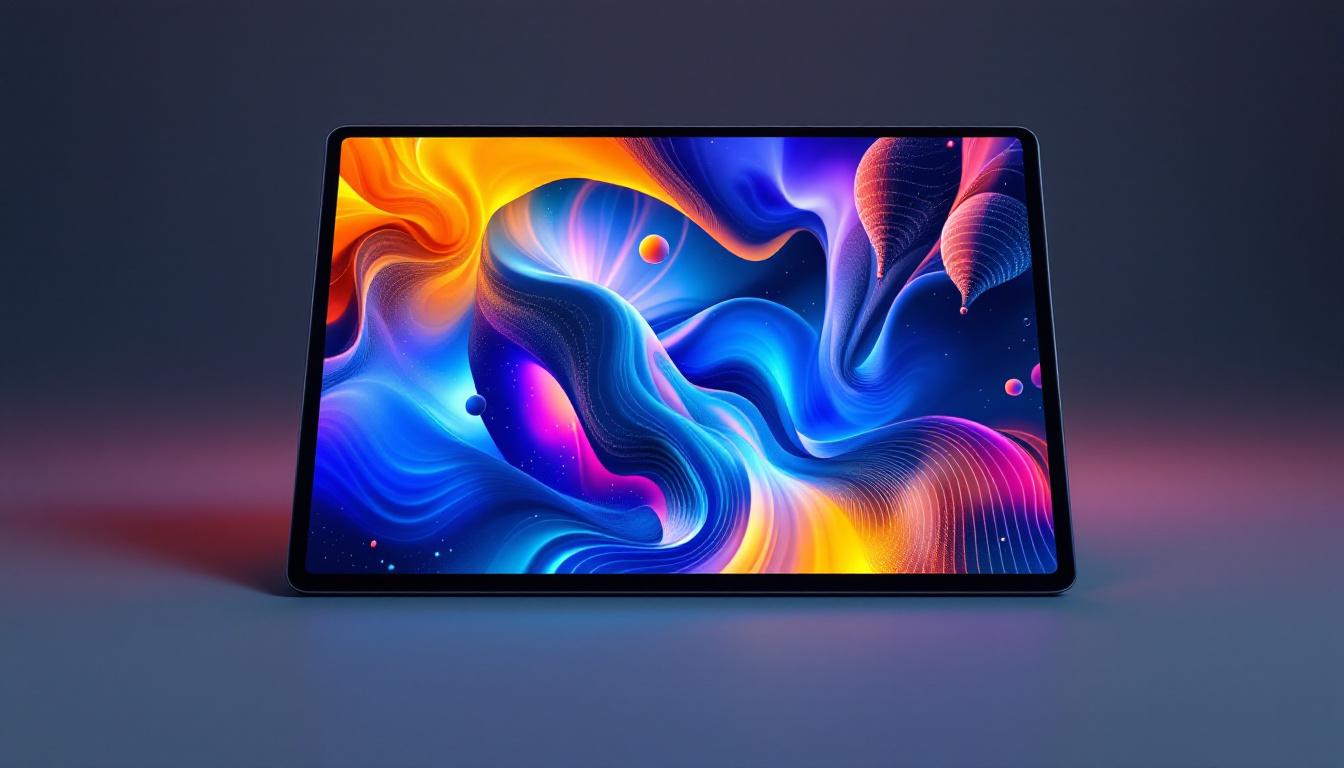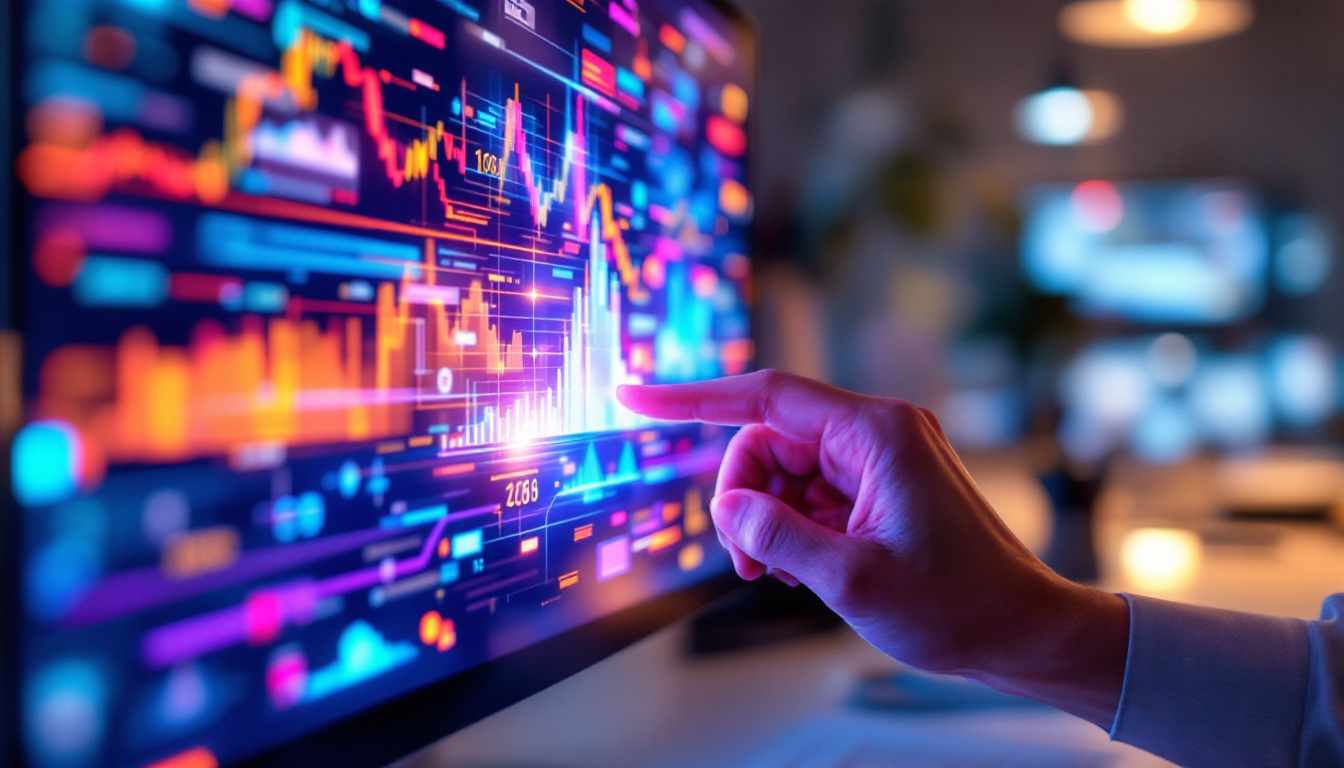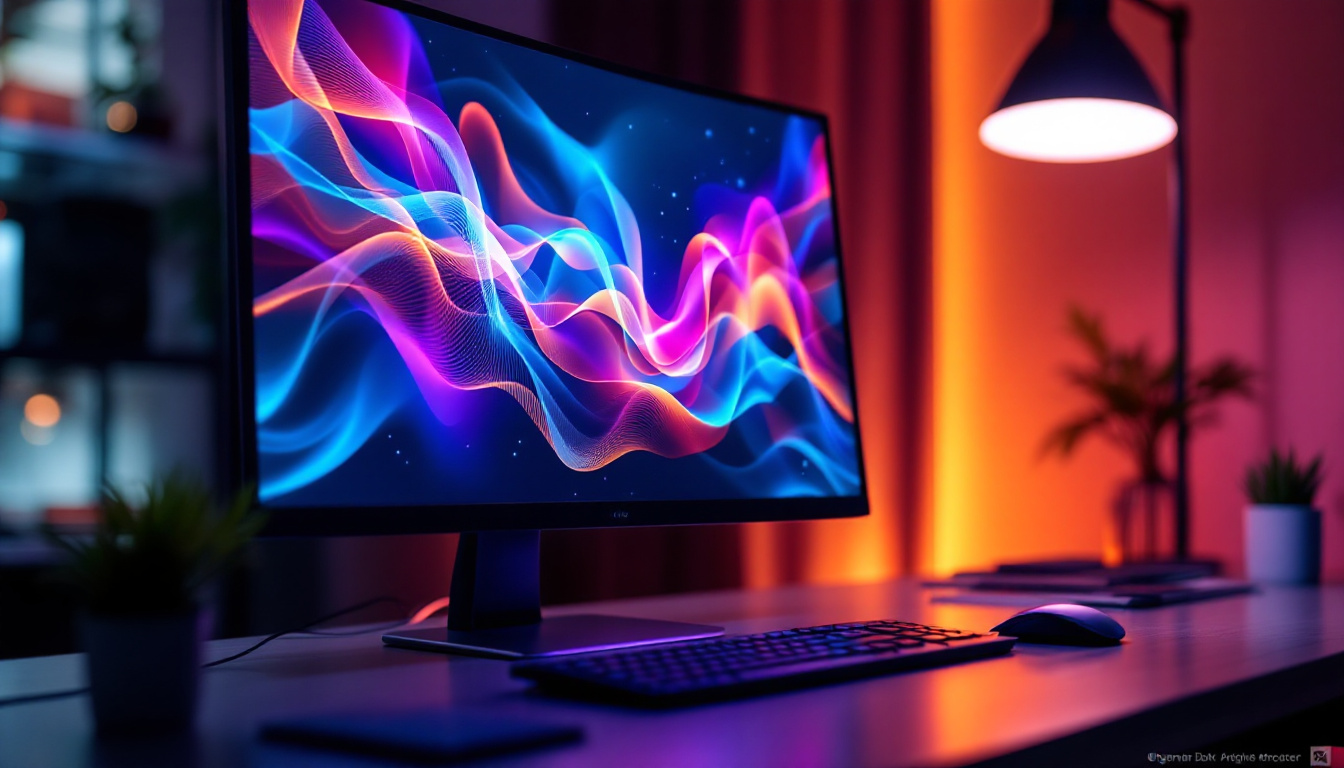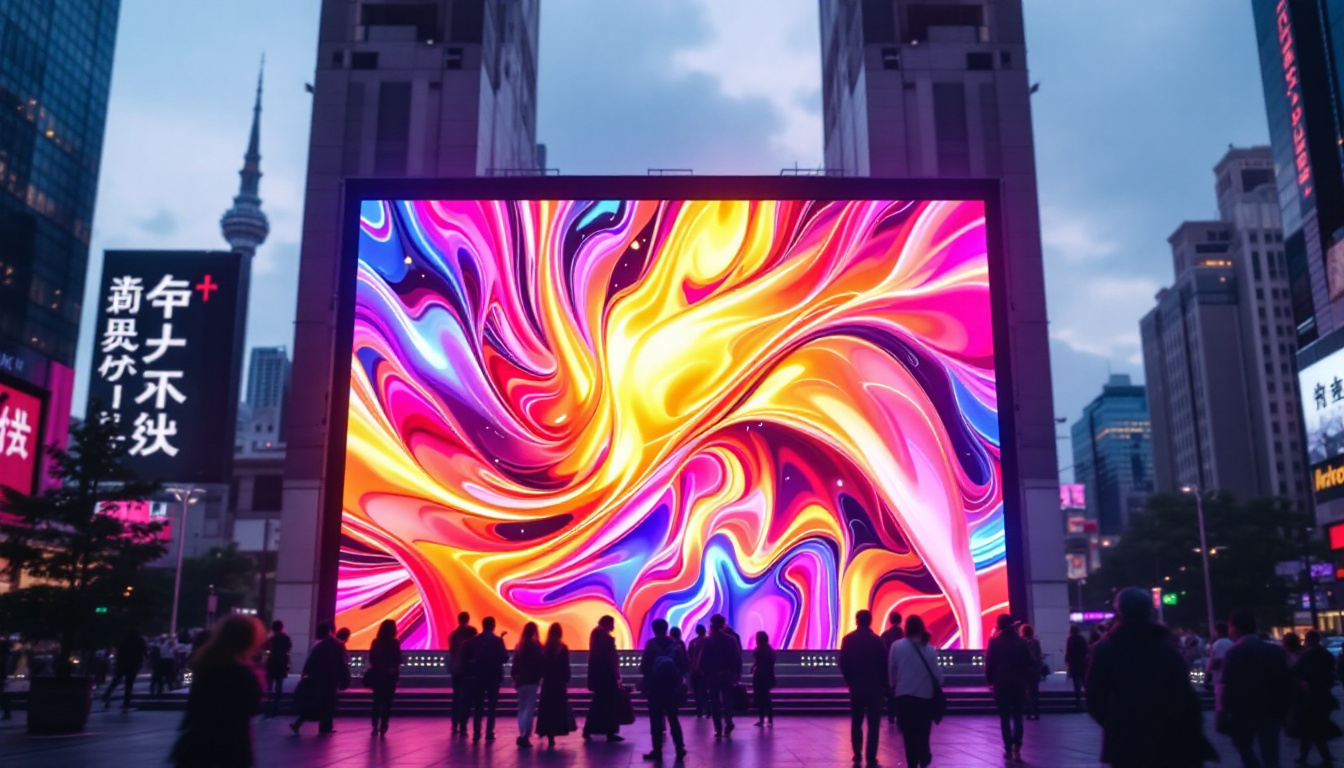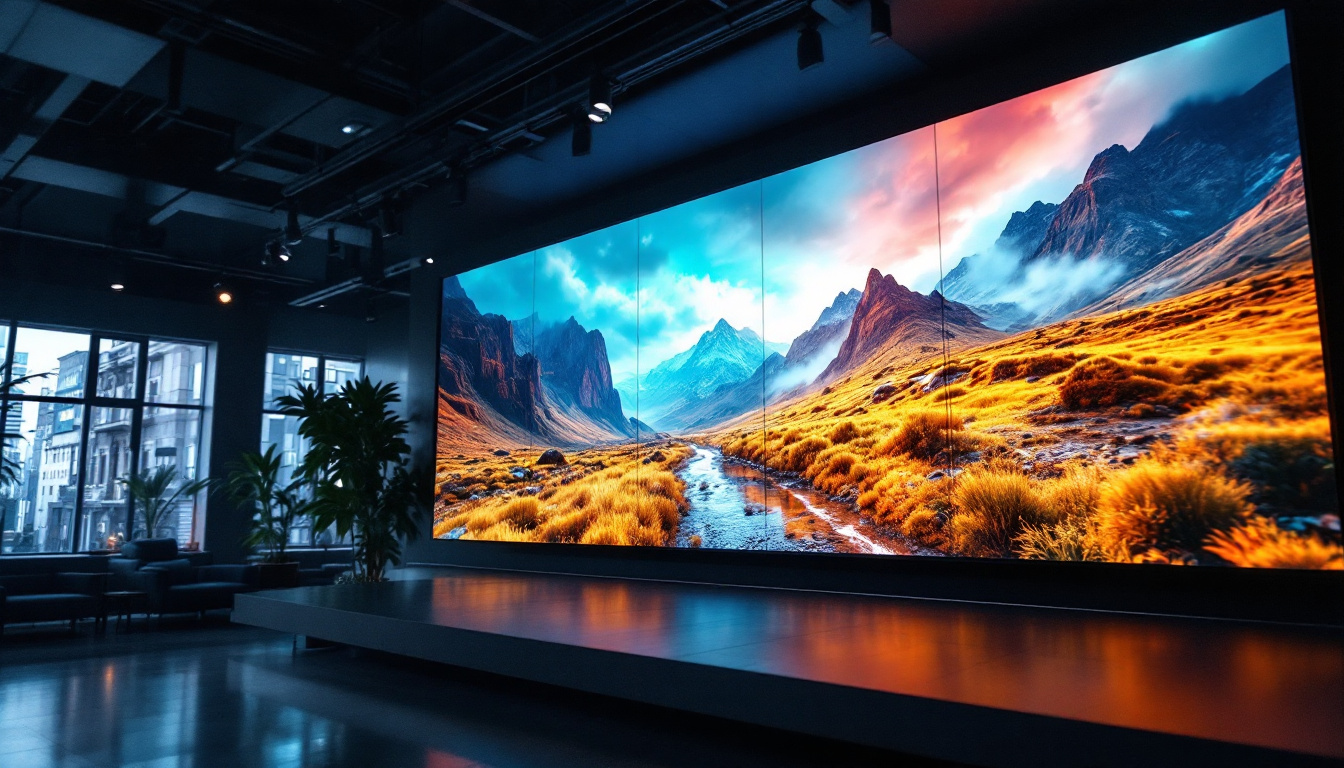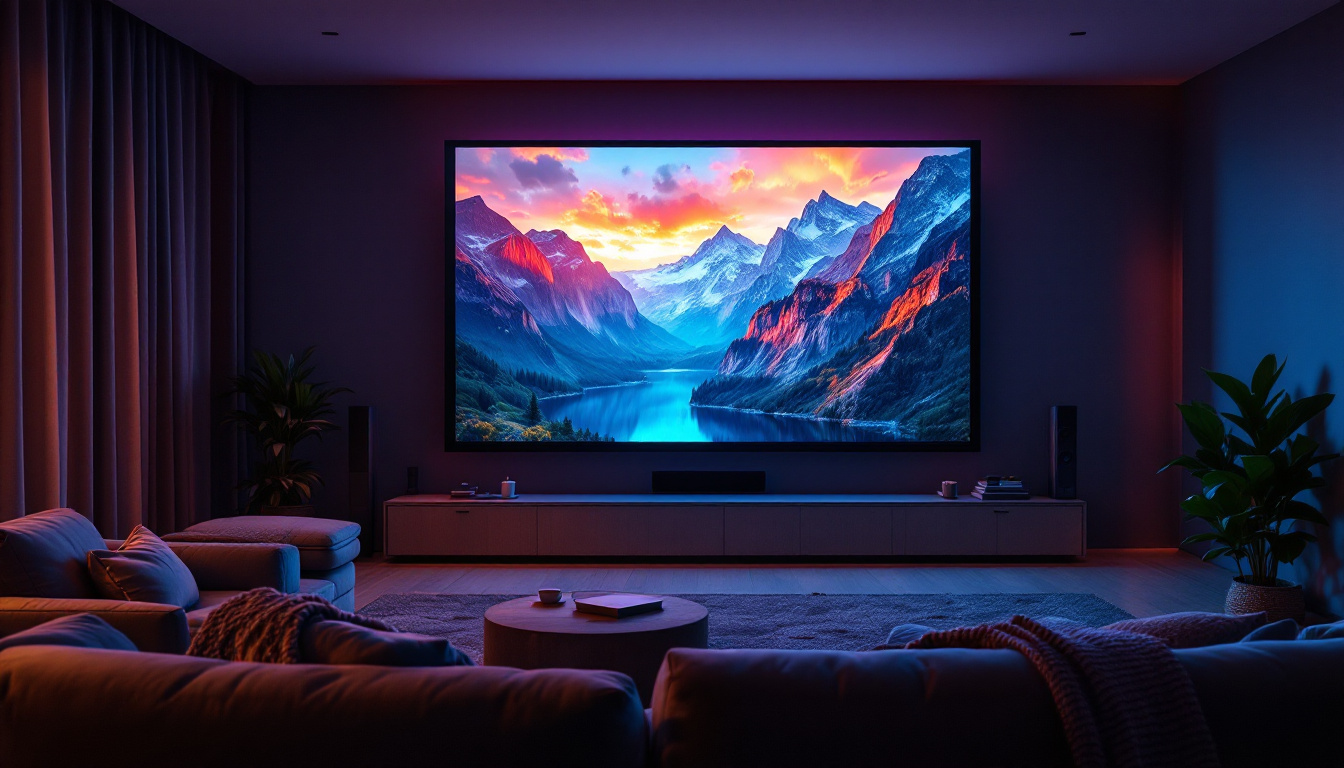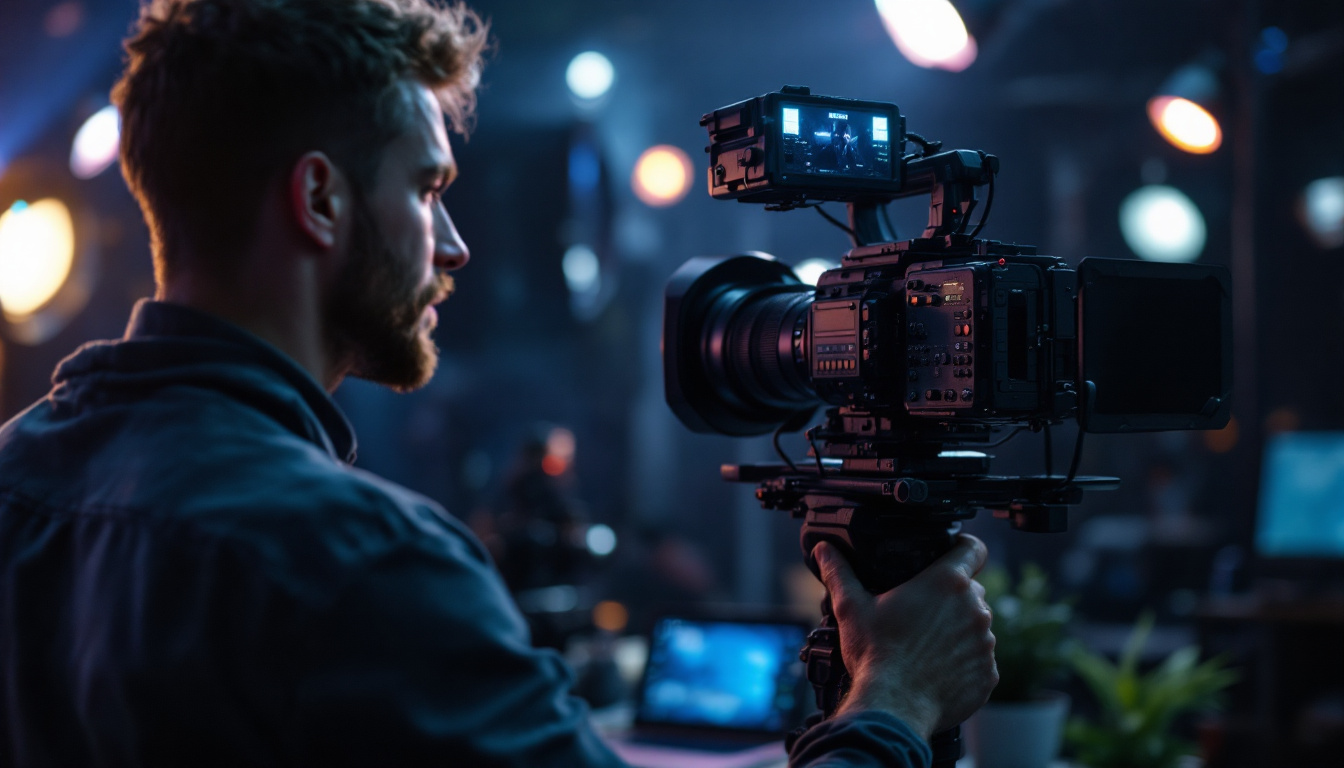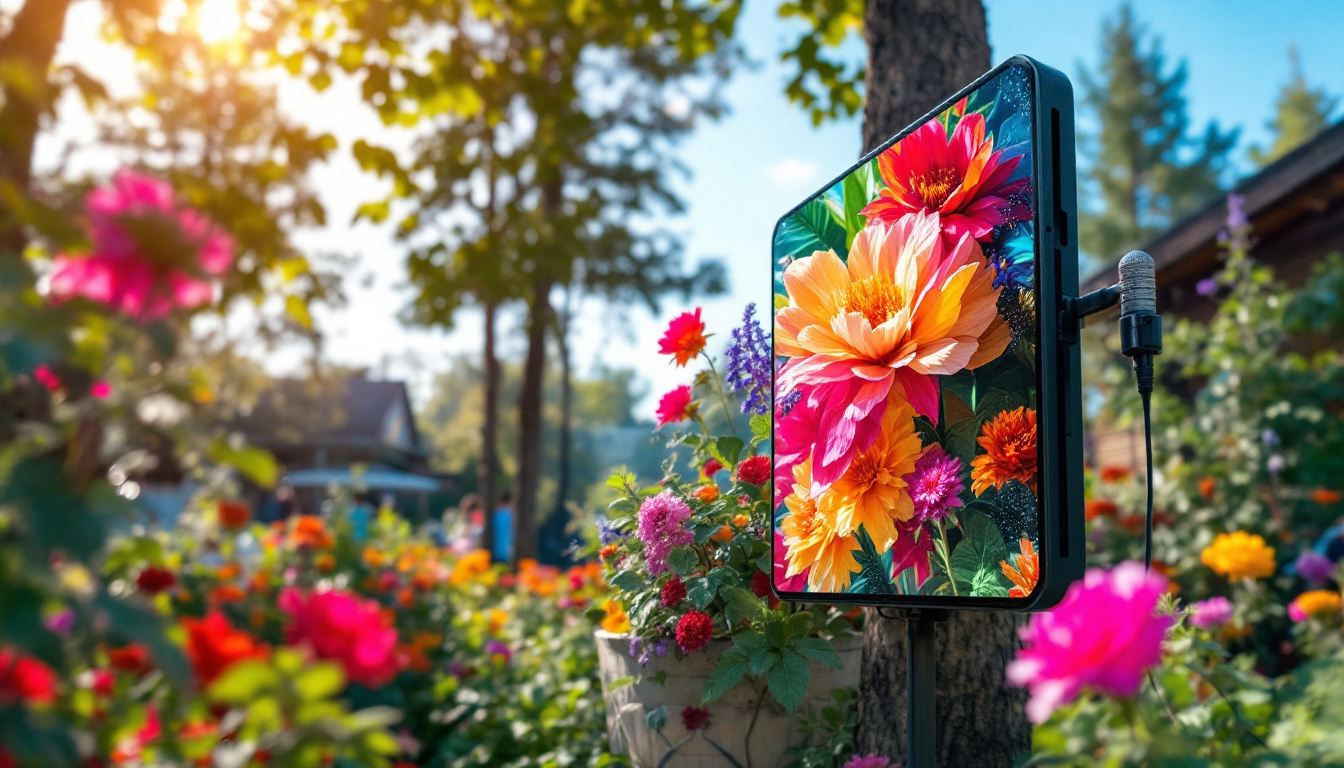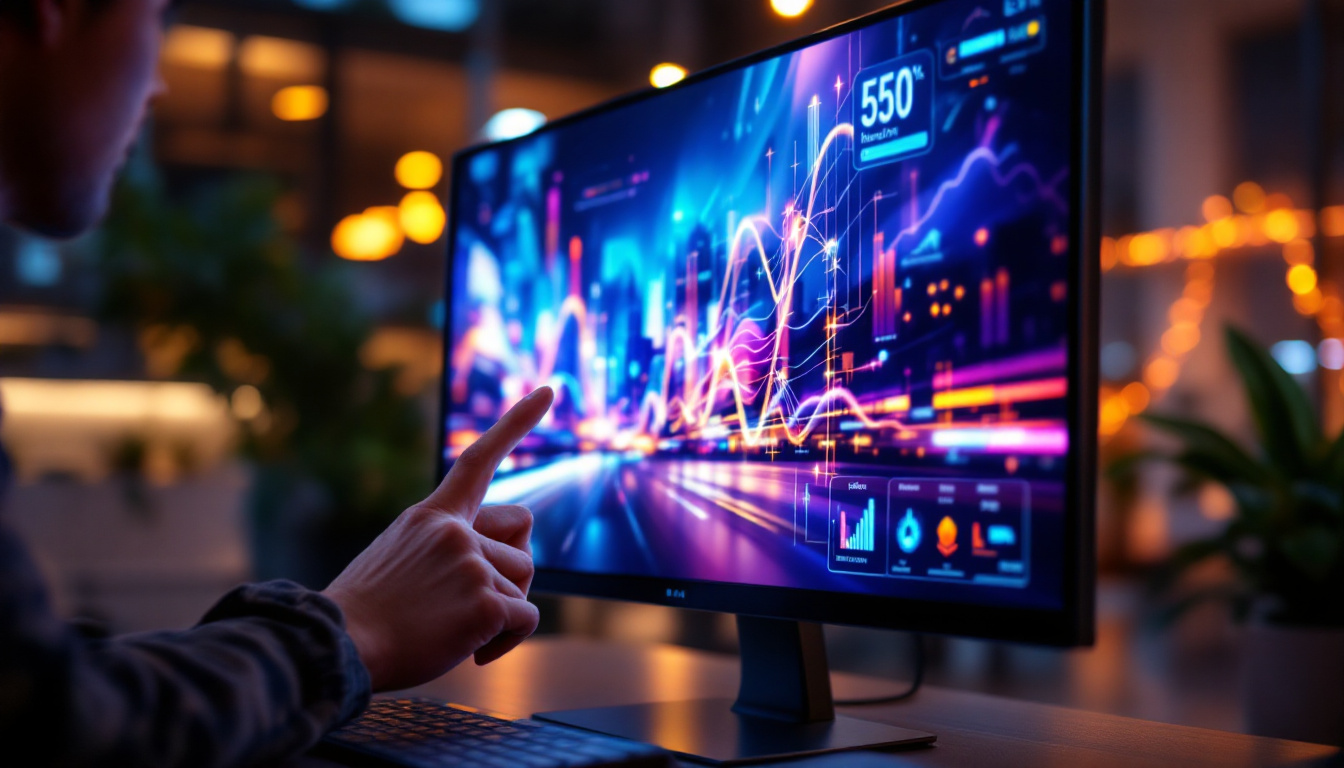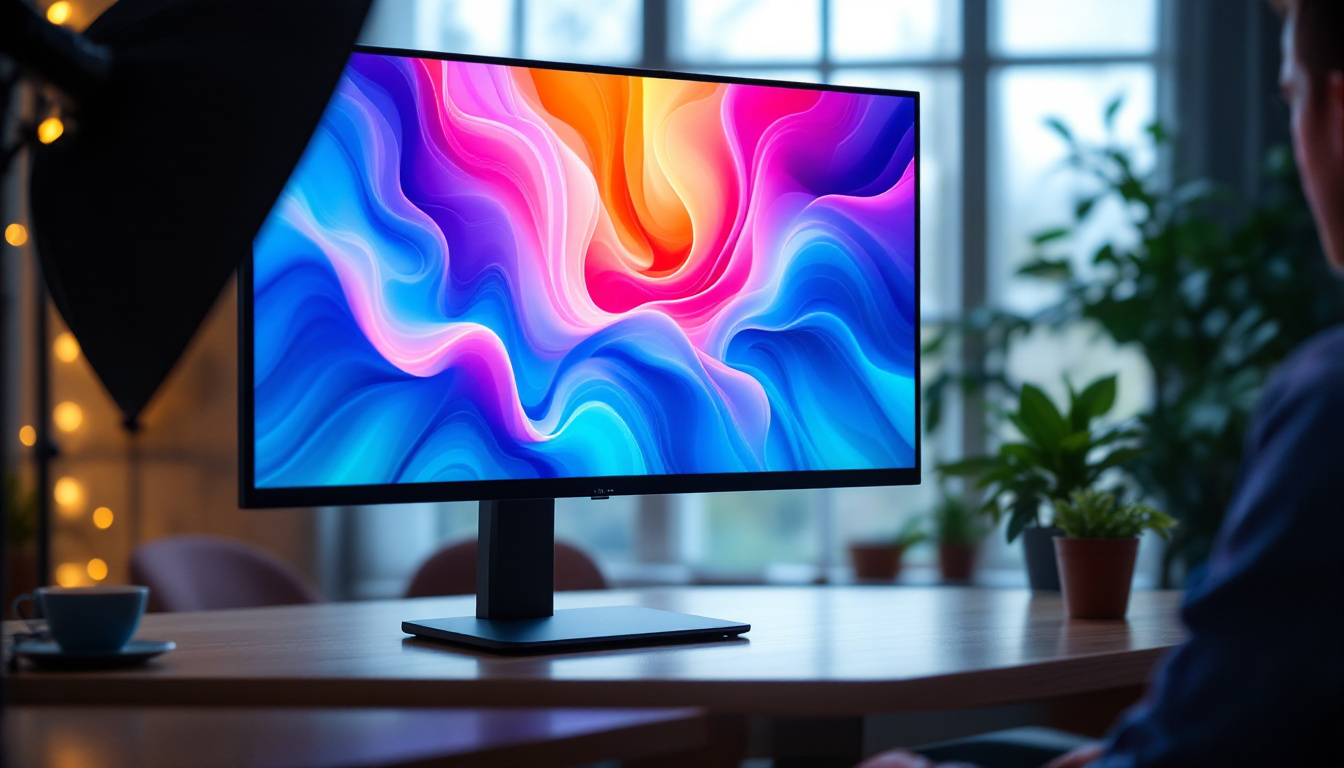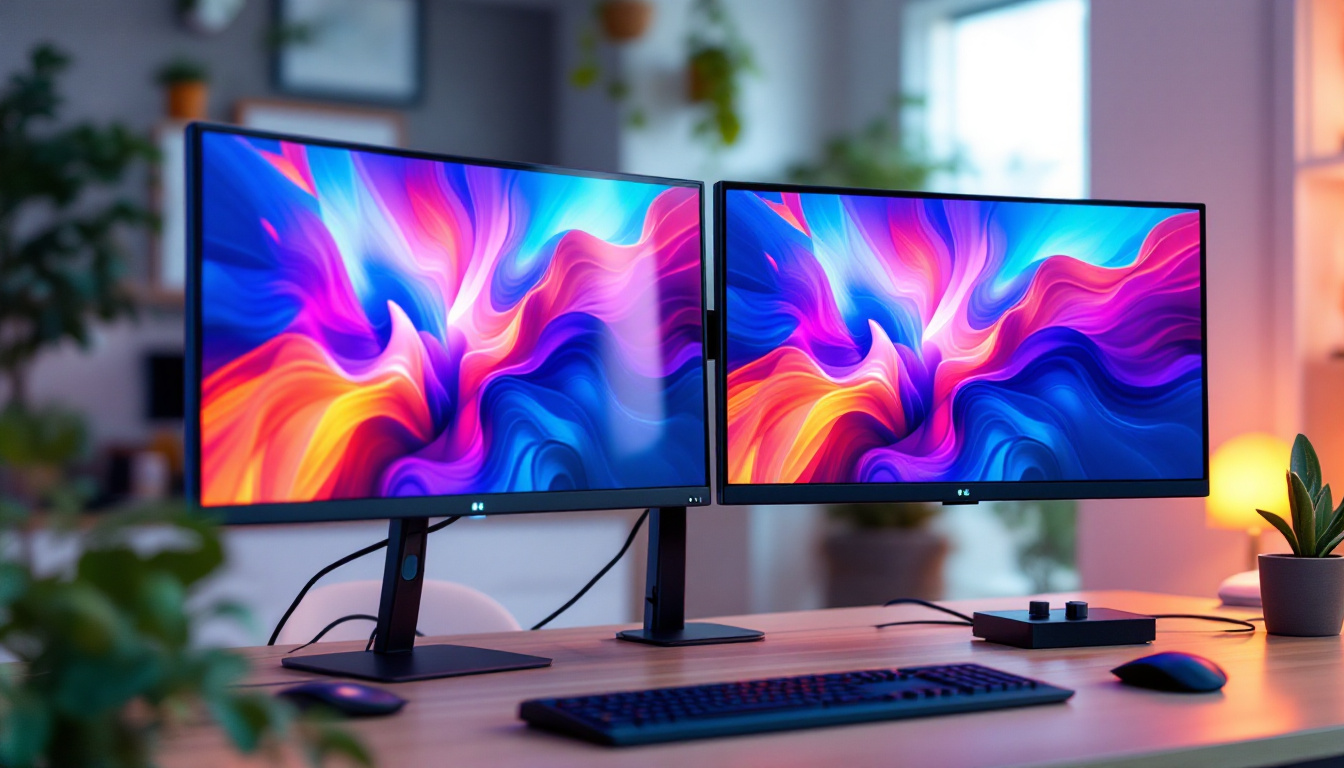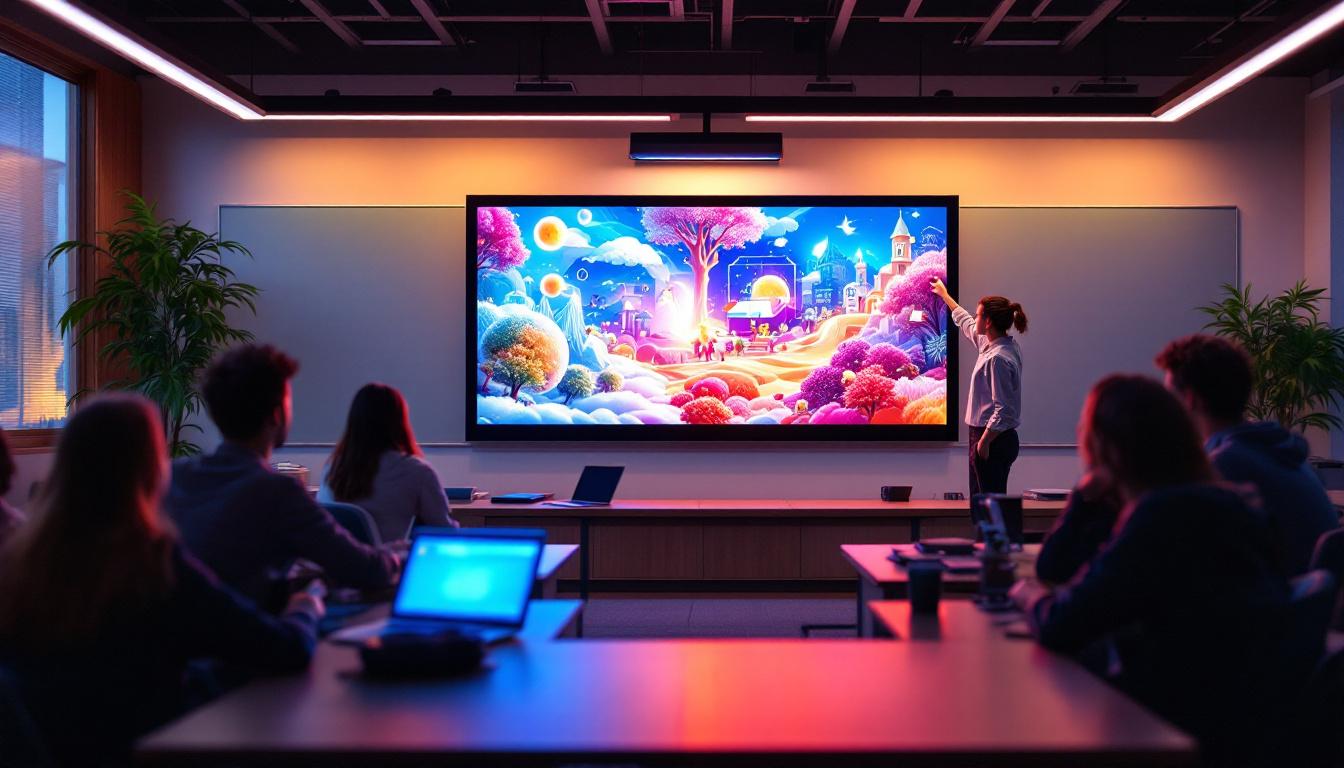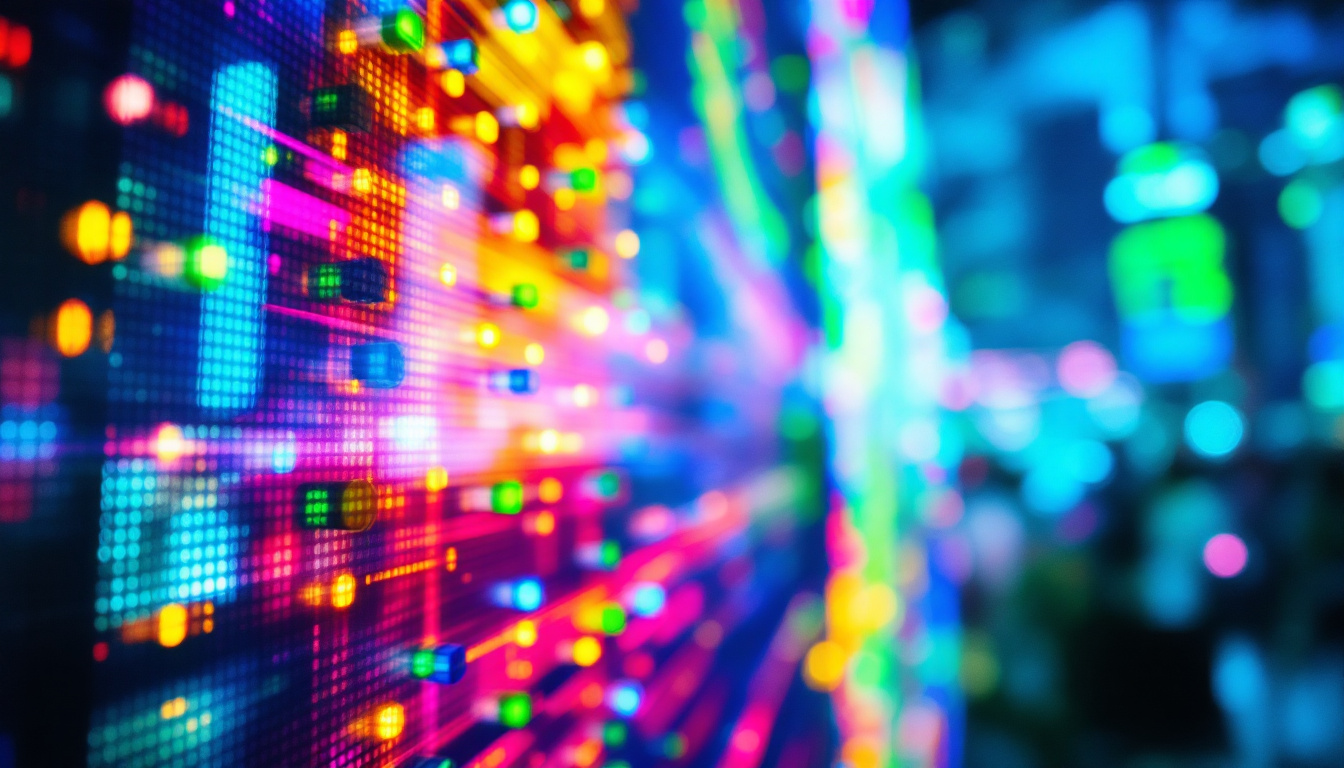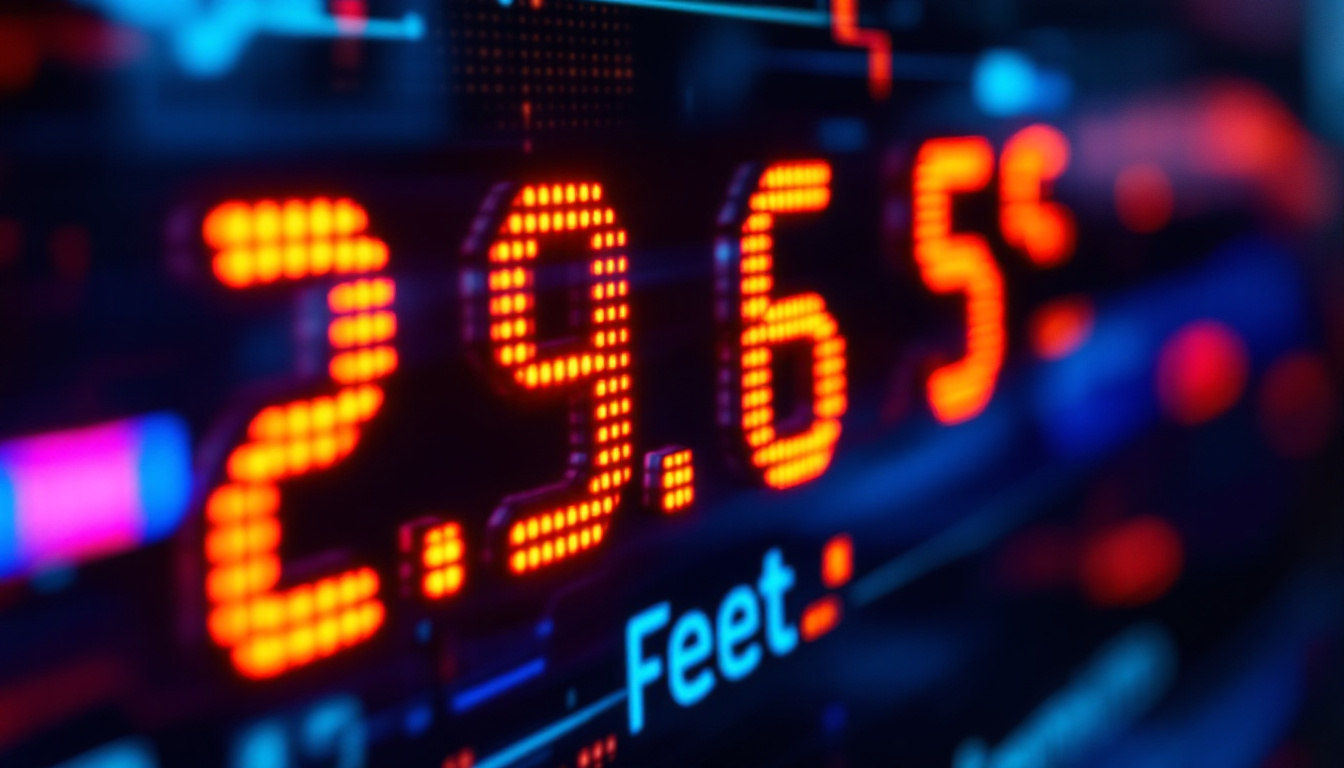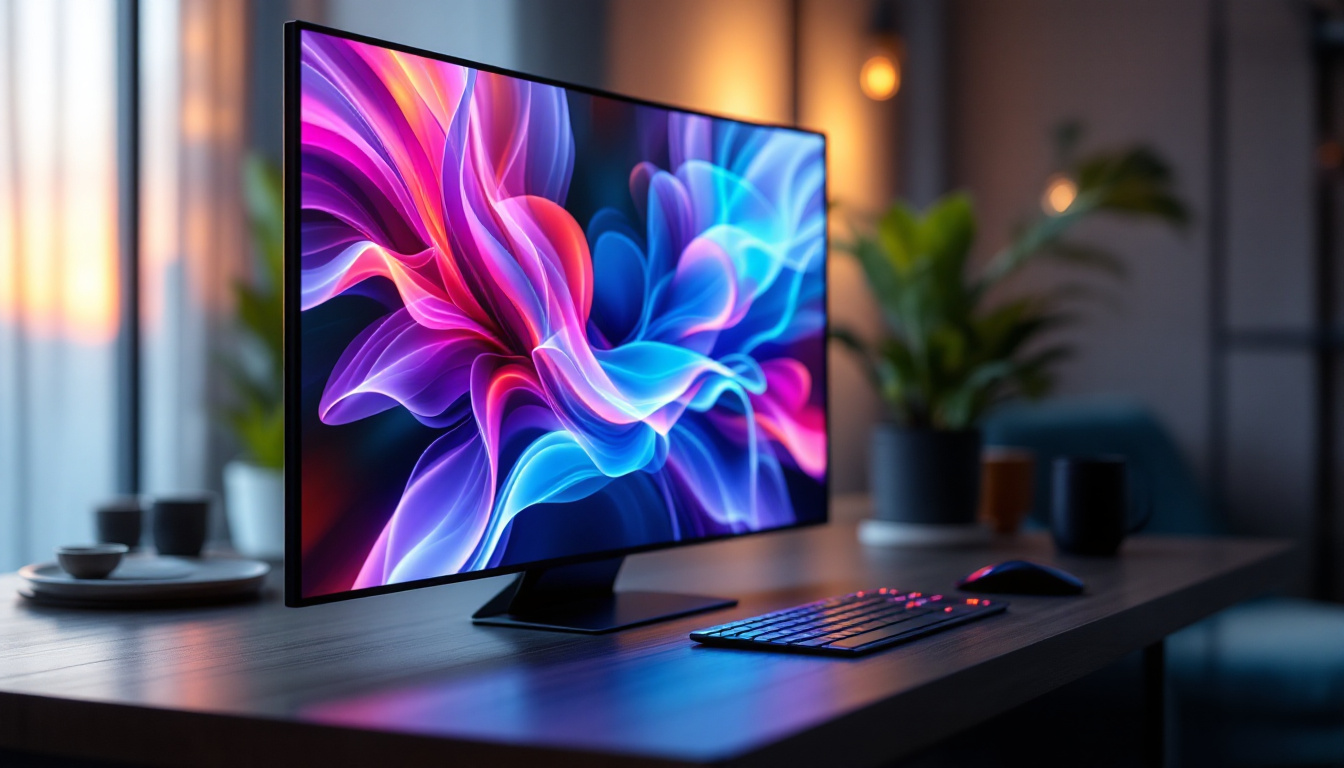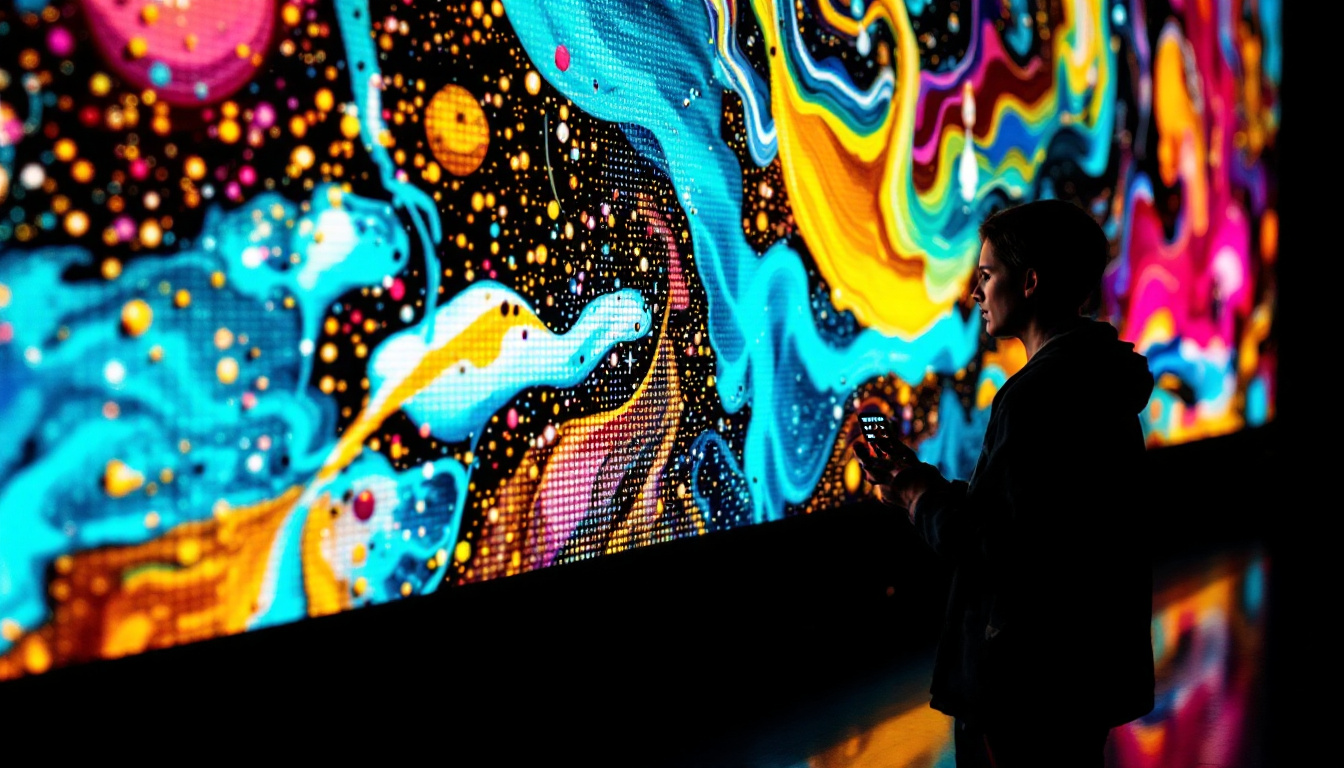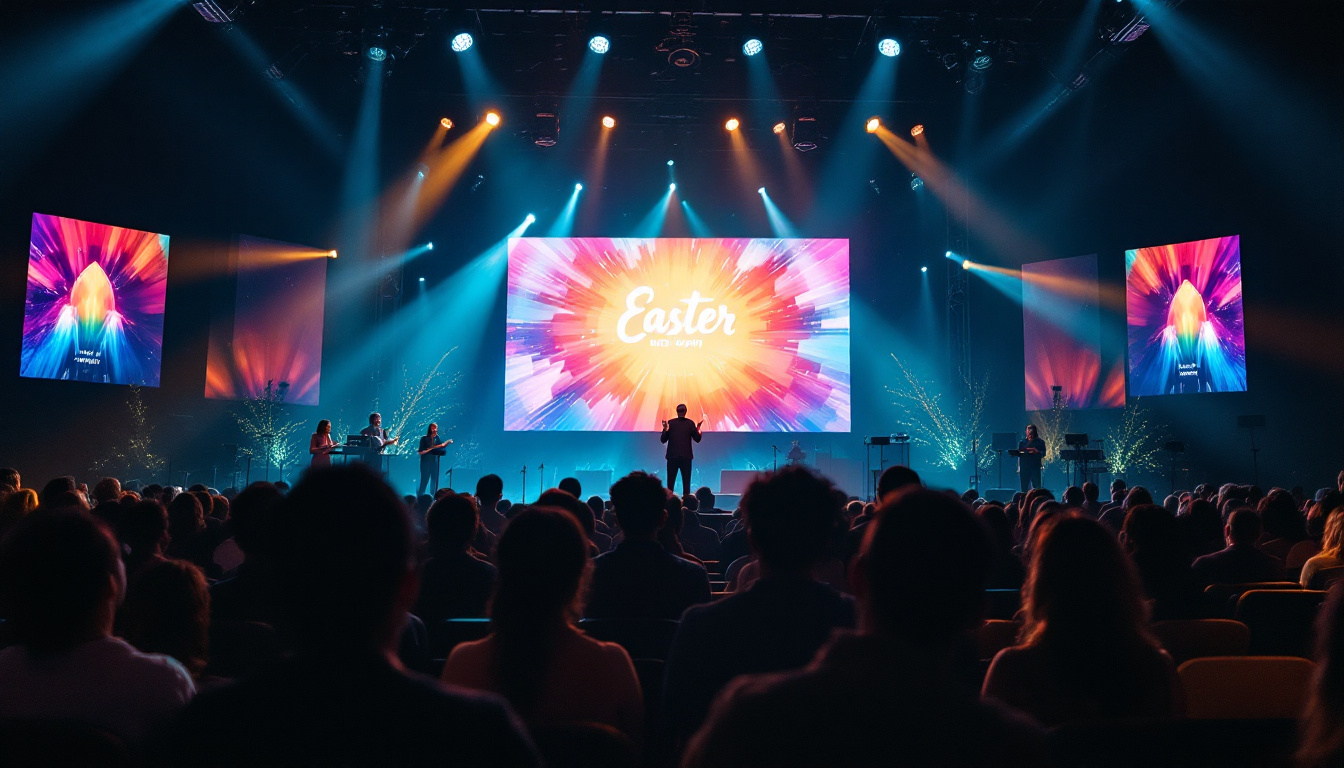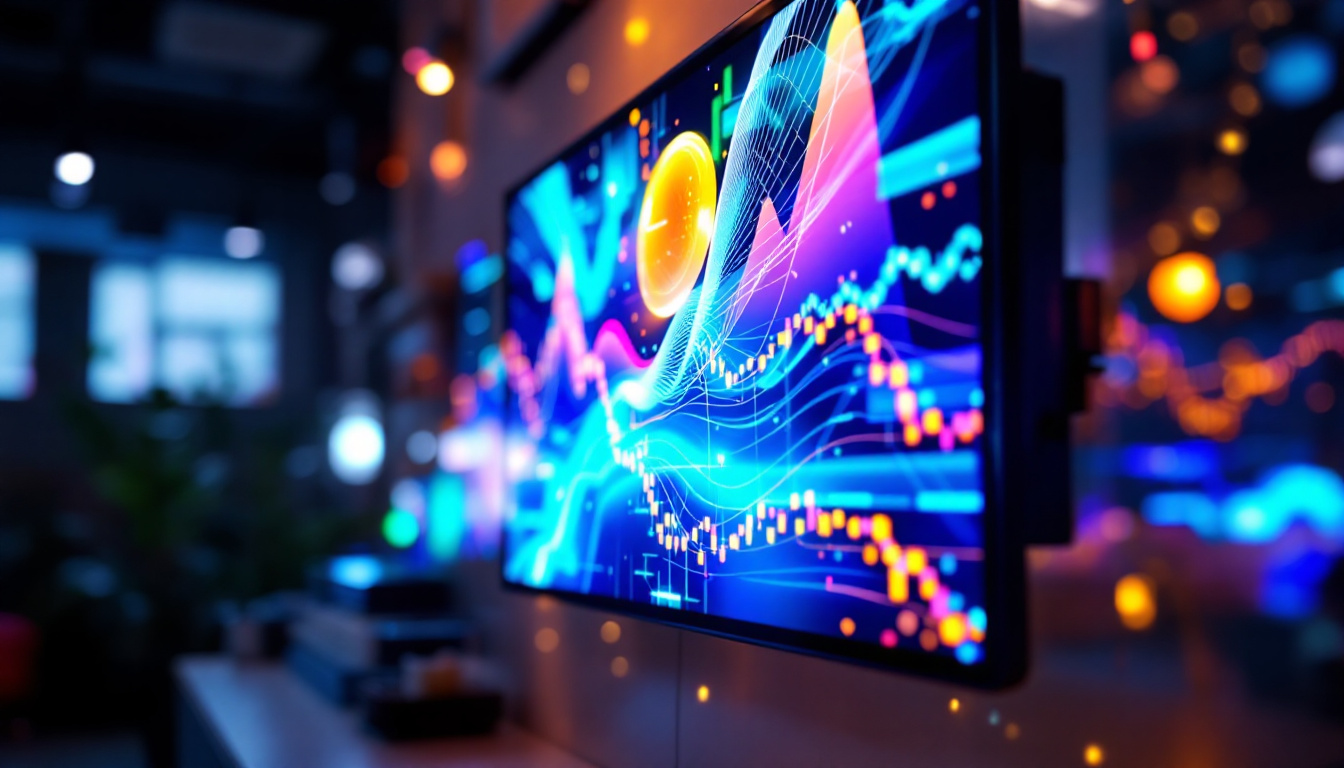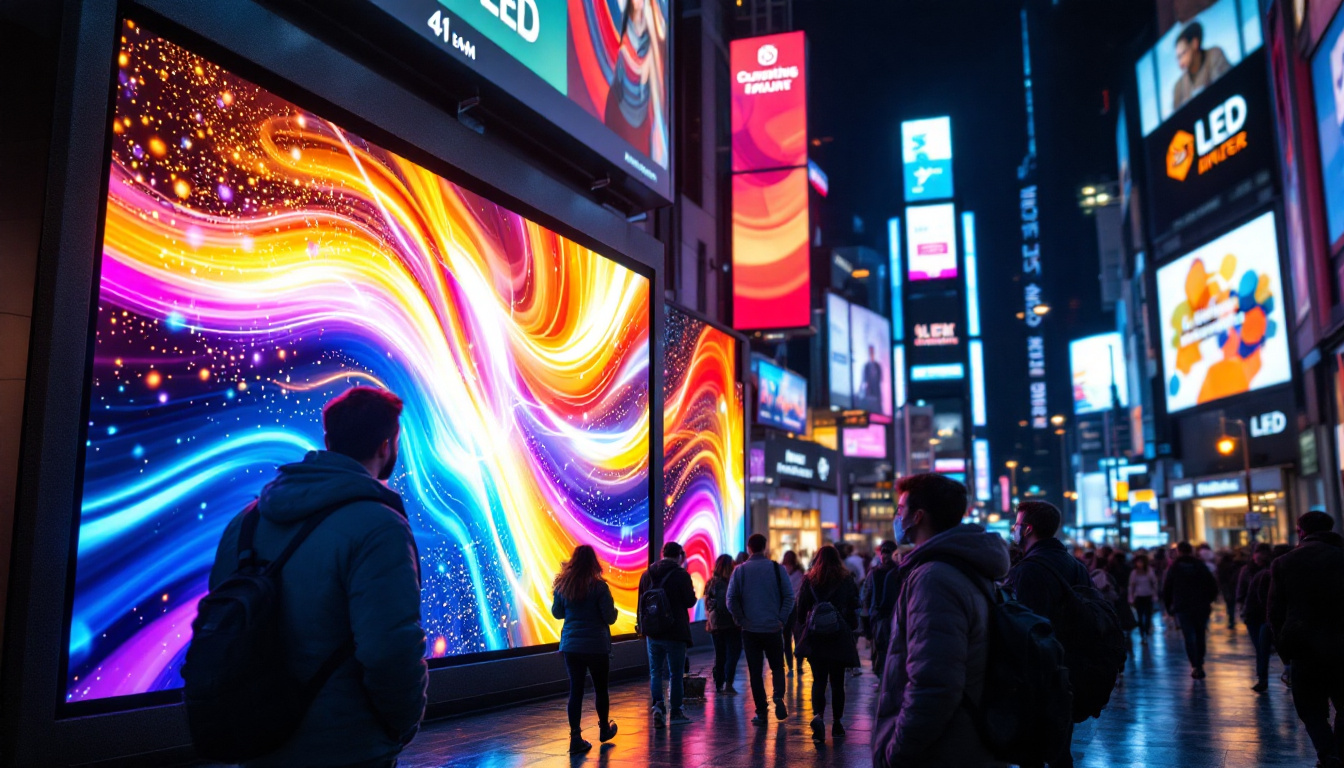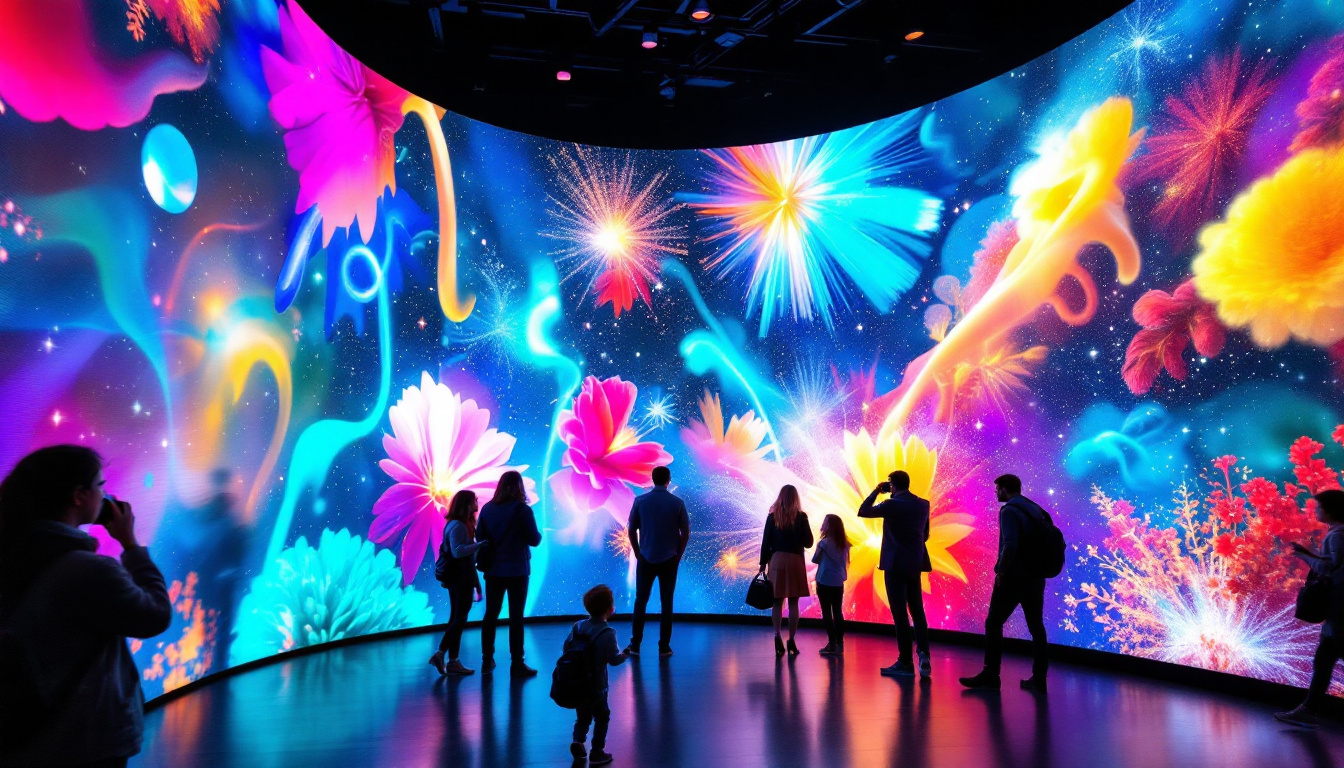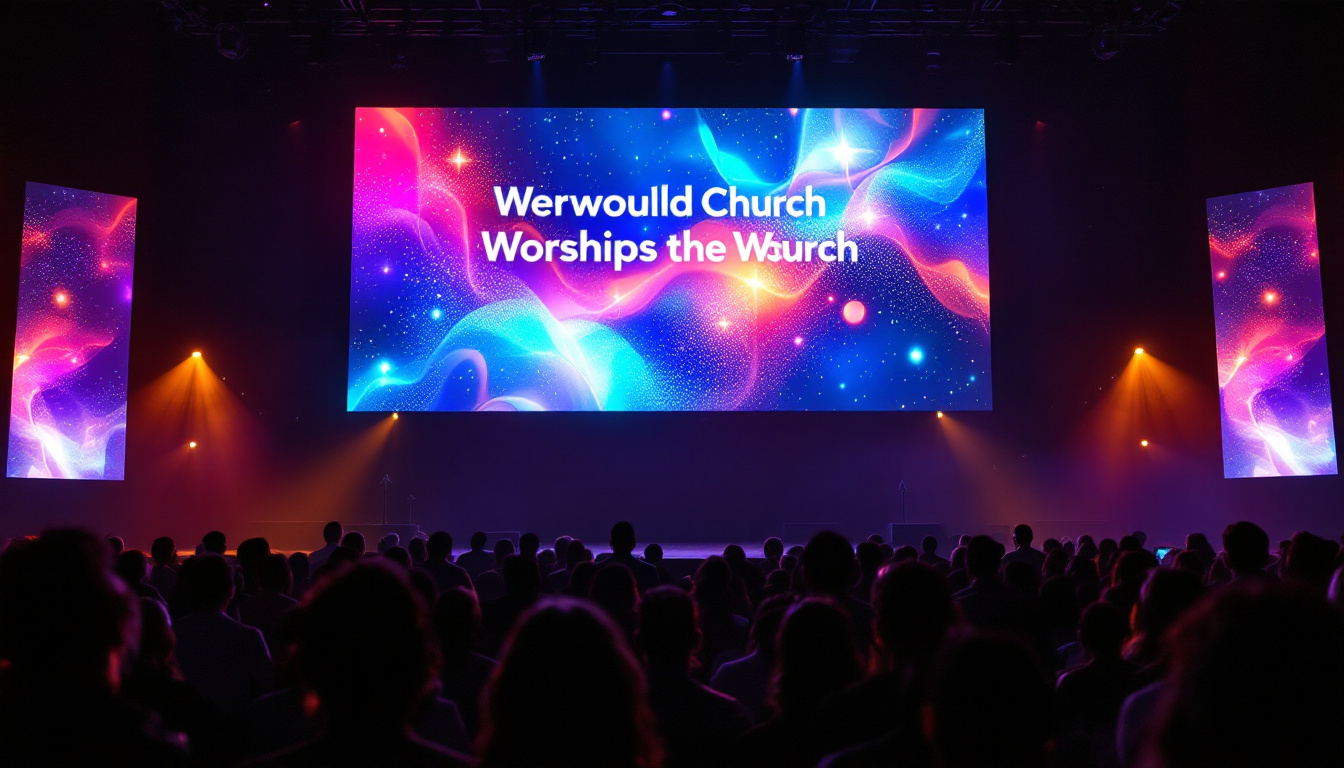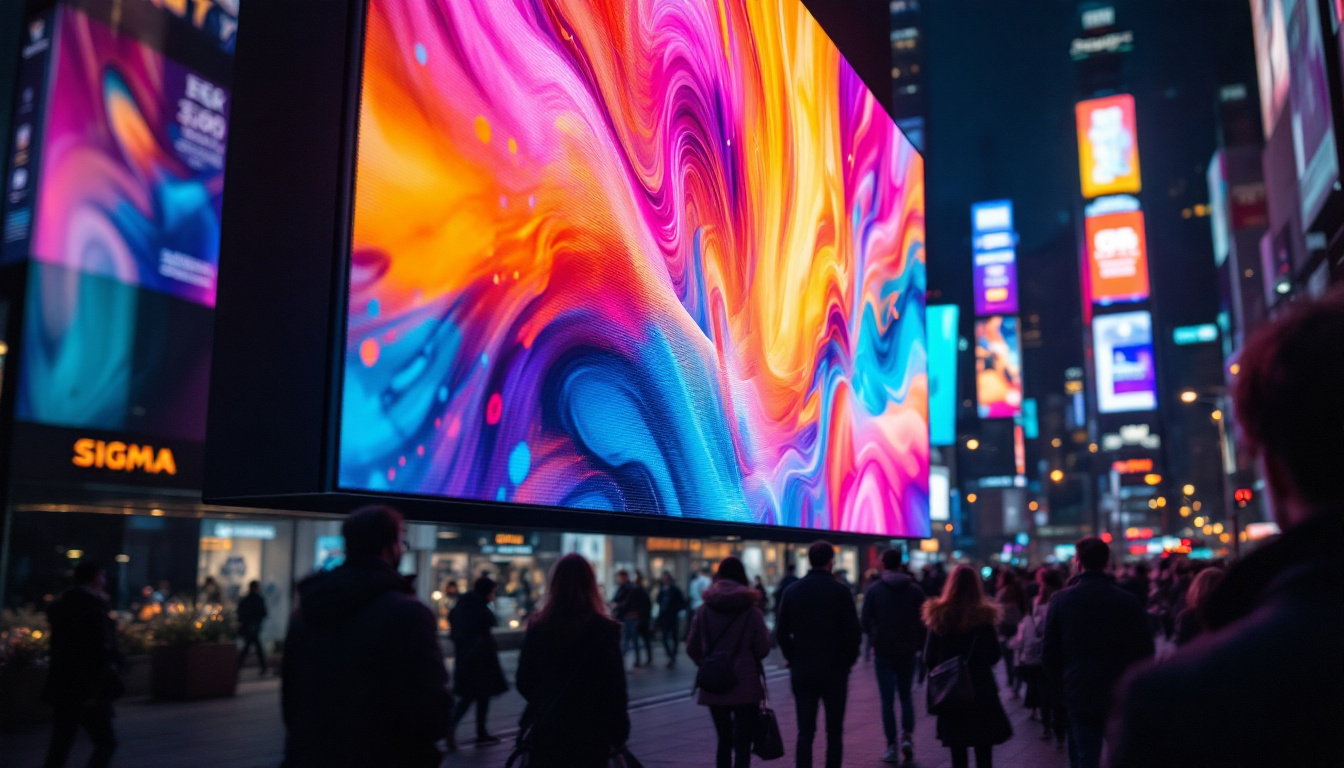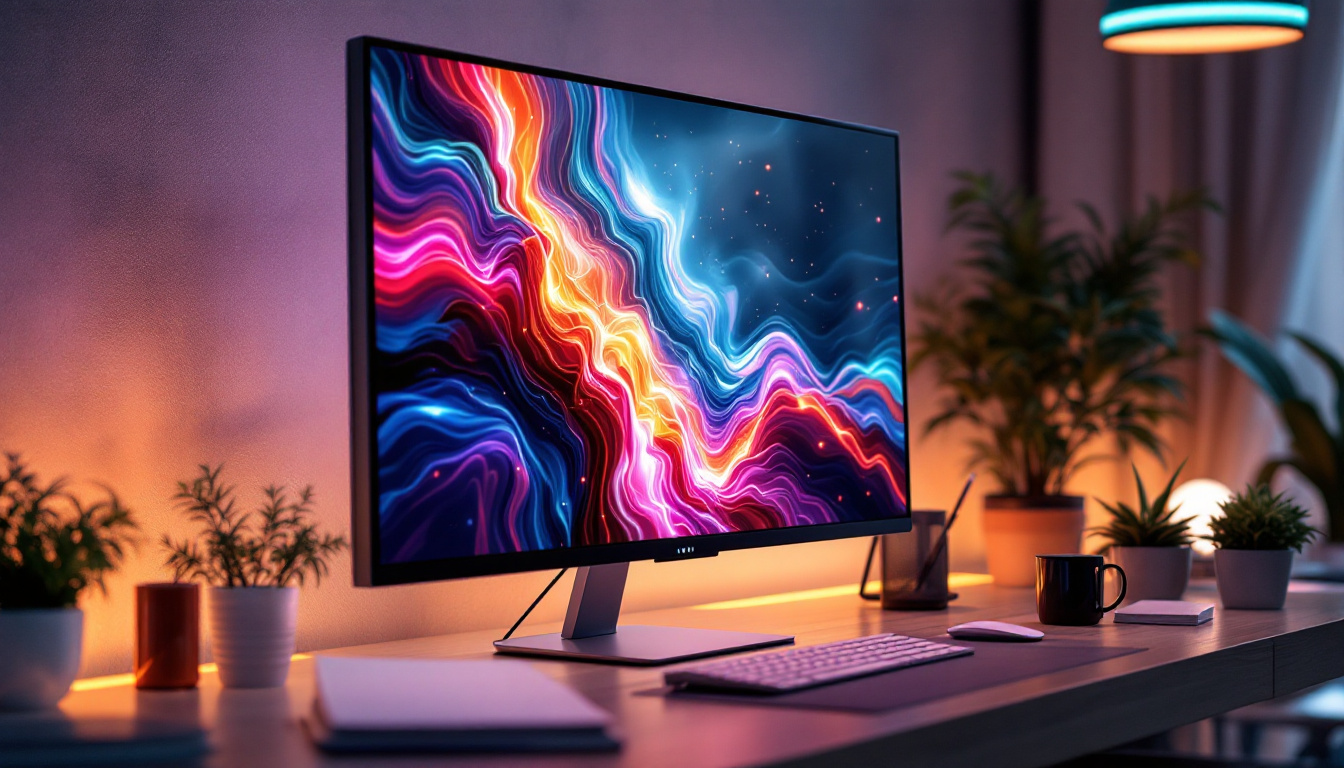In the competitive landscape of trade shows, standing out is paramount. One of the most effective ways to capture attention is through the use of LED displays. These vibrant and dynamic visual tools not only enhance the aesthetic appeal of a booth but also serve as powerful communication devices. This article delves into the various aspects of LED displays in trade show booths, exploring their benefits, types, and best practices for implementation.
Understanding LED Displays
LED, or Light Emitting Diode, technology has revolutionized the way visuals are presented in various settings. In the context of trade shows, LED displays provide a unique opportunity to engage attendees and convey messages effectively. Unlike traditional displays, LED screens offer superior brightness, contrast, and color accuracy, making them ideal for attracting attention in bustling environments. The ability to showcase high-definition graphics and videos means that brands can create immersive experiences that resonate with their audience, leaving a lasting impression.
How LED Displays Work
At the core of LED technology is the semiconductor material that emits light when an electric current passes through it. This process allows for the creation of vibrant images and videos. LED displays can be composed of thousands of individual diodes, which work together to produce a cohesive visual output. The flexibility in size and shape means that they can be customized to fit any booth design. Moreover, advancements in technology have led to the development of flexible LED screens that can be curved or shaped to create unique visual effects, further enhancing the overall aesthetic of a trade show booth.
Benefits of Using LED Displays
Incorporating LED displays into trade show booths comes with a multitude of advantages. First and foremost, they provide high visibility, ensuring that your booth captures the attention of passersby. The brightness of LED screens stands out even in well-lit environments, making them an effective tool for communication. This high visibility can lead to increased foot traffic, allowing exhibitors to connect with a larger audience and generate more leads.
Additionally, LED displays are energy-efficient, consuming less power compared to traditional displays. This not only reduces operational costs but also aligns with sustainability goals, an increasingly important consideration for many businesses today. Furthermore, the versatility of LED displays allows for dynamic content changes, enabling exhibitors to tailor their messaging throughout the event. This adaptability means that companies can respond to audience engagement in real-time, showcasing different products or promotions based on the interests of the attendees. The interactive potential of LED displays can also be harnessed through touch screens or integration with social media feeds, creating a more engaging experience that encourages participation and interaction.
Types of LED Displays
When it comes to selecting an LED display for a trade show booth, understanding the different types available is crucial. Each type offers unique features that cater to various needs and preferences.
Indoor vs. Outdoor LED Displays
Indoor LED displays are designed for environments with controlled lighting. They typically have a higher pixel density, resulting in sharper images and finer details. These displays are perfect for showcasing products, videos, or presentations in a trade show setting.
On the other hand, outdoor LED displays are built to withstand the elements. They feature a lower pixel density but are significantly brighter to combat sunlight and other environmental factors. These displays are ideal for outdoor events or booths that require visibility from a distance. Additionally, outdoor displays often come with weatherproof casings and enhanced durability features, ensuring they can endure rain, wind, and varying temperatures without compromising performance.
Fixed vs. Rental LED Displays
Fixed LED displays are permanent installations that are often used in retail spaces, corporate offices, or other long-term applications. They are typically more cost-effective over time but require a larger upfront investment. Businesses that opt for fixed displays can benefit from their longevity and the ability to create a consistent brand presence, as these displays can be customized to reflect the company’s identity and messaging.
Rental LED displays, conversely, are a popular choice for trade shows due to their flexibility. Exhibitors can rent displays that fit their specific booth design and messaging needs without the commitment of a purchase. This option allows businesses to frequently update their displays for different events. Moreover, rental services often include support for setup and technical assistance, ensuring that exhibitors can focus on engaging with attendees rather than managing display logistics.
Curved and Flexible LED Displays
Curved and flexible LED displays offer innovative design possibilities. These displays can be shaped to fit unique booth layouts or create immersive environments. Their adaptability makes them particularly appealing for brands looking to create a memorable experience for attendees.
By utilizing curved displays, exhibitors can enhance the visual flow of their booth, guiding visitors’ attention and creating a more engaging atmosphere. Flexible displays can also be used to create interactive installations, further enhancing visitor engagement. For instance, brands might incorporate touch-sensitive flexible displays that allow attendees to interact with content directly, fostering a deeper connection with the product or service being showcased. This level of interactivity not only captivates visitors but also encourages them to share their experiences on social media, amplifying the booth’s reach beyond the event itself.
Best Practices for Implementing LED Displays
To maximize the effectiveness of LED displays in trade show booths, certain best practices should be followed. These guidelines ensure that the displays serve their intended purpose and contribute positively to the overall booth experience.
Content is Key
The content displayed on LED screens should be carefully curated. High-quality visuals, concise messaging, and engaging videos can significantly enhance the impact of the display. It’s essential to keep in mind that trade show attendees have limited time to absorb information, so messages should be clear and to the point.
Incorporating animations or dynamic content can also draw attention, but it’s important to strike a balance. Overly complex visuals can be distracting and may detract from the primary message. Simplicity often leads to greater retention of information. Furthermore, using a consistent color palette and branding elements throughout the display can create a cohesive look that reinforces brand identity, making it easier for attendees to remember your message long after they leave the booth.
Strategic Placement
Placement of LED displays within the booth is critical. They should be positioned at eye level and in areas where they can be easily viewed from multiple angles. This ensures that attendees can engage with the content without straining their necks or moving too far into the booth.
Additionally, considering the flow of foot traffic can influence placement decisions. Displays should be positioned to draw visitors into the booth, creating a welcoming and engaging environment. Utilizing corner spaces or areas near entrances can capitalize on natural foot traffic patterns, while also ensuring that the display is not obstructed by other booth elements. Furthermore, integrating LED displays with other booth features, such as product demonstrations or seating areas, can create a more immersive experience that encourages longer visits.
Interactivity and Engagement
Incorporating interactive elements into LED displays can significantly enhance visitor engagement. Touch screens, QR codes, or interactive videos can encourage attendees to interact with the content, making the experience more memorable.
Gamification is another effective strategy. By creating games or quizzes that utilize the LED display, exhibitors can attract visitors and encourage them to spend more time at the booth. This not only increases engagement but also provides opportunities for lead generation. Additionally, offering incentives such as giveaways or discounts for participation can further entice attendees to engage with the display. By fostering a sense of competition or collaboration, exhibitors can create a lively atmosphere that not only entertains but also educates potential customers about their products or services.
Measuring Success
After the trade show, measuring the success of LED displays is crucial for understanding their impact and informing future strategies. Various metrics can be used to evaluate performance.
Visitor Engagement Metrics
Tracking visitor engagement can provide valuable insights into the effectiveness of the LED displays. Metrics such as the number of interactions, time spent at the booth, and the number of leads generated can help assess the impact of the displays on overall booth performance.
Using tools like visitor tracking systems or lead retrieval apps can facilitate this process, providing data that can be analyzed to improve future trade show strategies. Additionally, analyzing the demographics of the visitors who interacted with the displays can help tailor future marketing efforts. Understanding which segments of the audience were most engaged can guide the development of targeted campaigns that resonate with specific groups, ultimately enhancing the return on investment.
Feedback and Surveys
Gathering feedback from attendees can also provide qualitative insights into the effectiveness of LED displays. Surveys can be conducted to assess how well the displays communicated the intended message and whether they captured the interest of visitors.
Incorporating feedback into future designs can lead to continuous improvement and a more refined approach to booth presentations. Furthermore, conducting follow-up interviews with key attendees can yield deeper insights into their experiences and perceptions. This qualitative data can complement the quantitative metrics, providing a holistic view of the display’s impact. By analyzing trends in feedback over multiple events, companies can identify recurring themes and make strategic adjustments that enhance the overall visitor experience and strengthen brand perception.
Conclusion
LED displays have become an integral component of trade show booths, offering unparalleled opportunities for engagement and communication. By understanding the various types of LED displays, implementing best practices, and measuring success, exhibitors can create impactful experiences that resonate with attendees.
As technology continues to evolve, the potential for LED displays in trade shows will only expand. Embracing these advancements and adapting strategies accordingly will ensure that businesses remain competitive in the ever-changing landscape of trade exhibitions.
Illuminate Your Brand with LumenMatrix
Ready to elevate your trade show presence and captivate your audience with unparalleled visual experiences? Discover LumenMatrix’s innovative LED display solutions, designed to bring your brand to life and ensure you stand out in the crowded trade show environment. From Indoor LED Walls to Custom Displays and Transparent Screens, LumenMatrix offers a comprehensive range of cutting-edge products that will transform your booth into a beacon of engagement. Don’t just show up, shine with LumenMatrix. Check out LumenMatrix LED Display Solutions and revolutionize your visual communication today.


